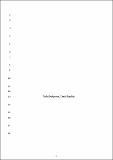Por favor, use este identificador para citar o enlazar a este item:
http://hdl.handle.net/10261/182671COMPARTIR / EXPORTAR:
 SHARE SHARE
 CORE
BASE CORE
BASE
|
|
| Visualizar otros formatos: MARC | Dublin Core | RDF | ORE | MODS | METS | DIDL | DATACITE | |

| Título: | Fire modulates ecosystem functioning through the phylogenetic structure of soil bacterial communities |
Autor: | Pérez-Valera, Eduardo; Goberna, M. CSIC ORCID; Verdú, Miguel CSIC ORCID | Palabras clave: | Ecosystem productivity Resilience Competitive superiority Taxonomic identity Community-weighted mean rRNA operon copy number Functional redundancy |
Fecha de publicación: | feb-2019 | Editor: | Elsevier | Citación: | Soil Biology and Biochemistry 129: 80-89 (2019) | Resumen: | The ecosystem functions performed by soil microbial communities can be indirectly altered by ecological disturbances that deeply modify abiotic factors. Fire, a widespread disturbance in nature, is well known to alter soil abiotic properties but we still ignore how these shifts are translated into changes in the structure of soil microbial communities and the ecosystem functions they deliver. The phylogenetic structure of soil bacterial communities has been shown to be a good predictor of ecosystem functioning, and therefore we used it as a measure linking the temporal variation of soil abiotic properties and ecosystem functions caused by an experimental fire in a Mediterranean shrubland. Fire immediately favoured a basal phylogenetic clade containing lineages that are able to thrive with high temperatures and to take advantage of the post-fire nutrient release. Later changes in the phylogenetic structure of the community were dominated by phyla from another basal clade that show competitive superiority coinciding with high levels of oxidizable carbon in soil. The phylogenetic structure of the bacterial community significantly explained not only microbial biomass, respiration and specific enzymatic activities related to C, N and P cycles but also the community-weighted mean number of 16S rRNA gene copies, an integrative proxy of several functions. While most of the ecosystem functions recovered one year after the fire, this was not the case of the structure of bacterial community, suggesting that functionally equivalent communities might be recovering the pre-disturbance levels of ecosystem performance. | Versión del editor: | http://dx.doi.org/10.1016/j.soilbio.2018.11.007 | URI: | http://hdl.handle.net/10261/182671 | DOI: | 10.1016/j.soilbio.2018.11.007 | ISSN: | 0038-0717 |
| Aparece en las colecciones: | (CIDE) Artículos |
Ficheros en este ítem:
| Fichero | Descripción | Tamaño | Formato | |
|---|---|---|---|---|
| Fire_modulates.pdf | 570,31 kB | Adobe PDF |  Visualizar/Abrir |
CORE Recommender
SCOPUSTM
Citations
37
checked on 23-abr-2024
WEB OF SCIENCETM
Citations
34
checked on 28-feb-2024
Page view(s)
245
checked on 24-abr-2024
Download(s)
418
checked on 24-abr-2024
Google ScholarTM
Check
Altmetric
Altmetric
NOTA: Los ítems de Digital.CSIC están protegidos por copyright, con todos los derechos reservados, a menos que se indique lo contrario.
